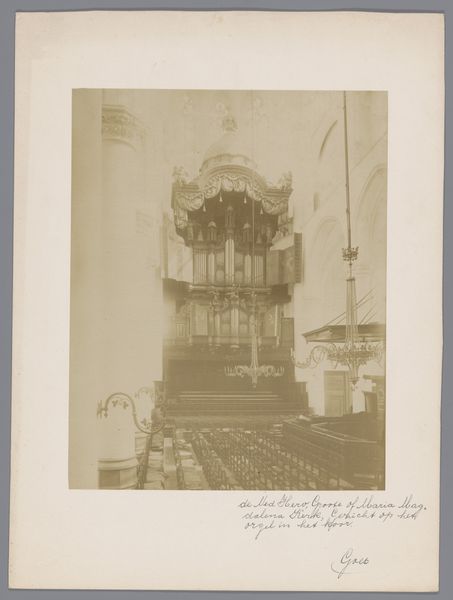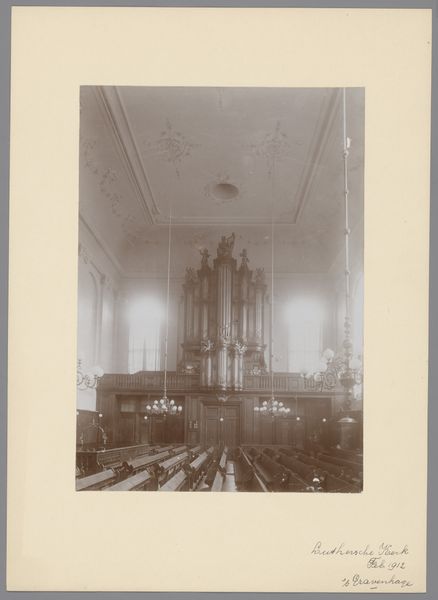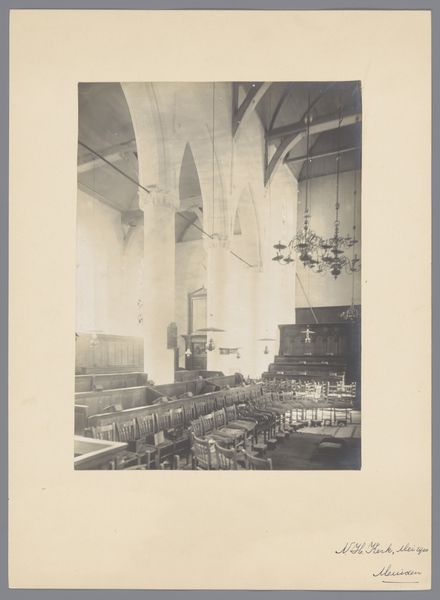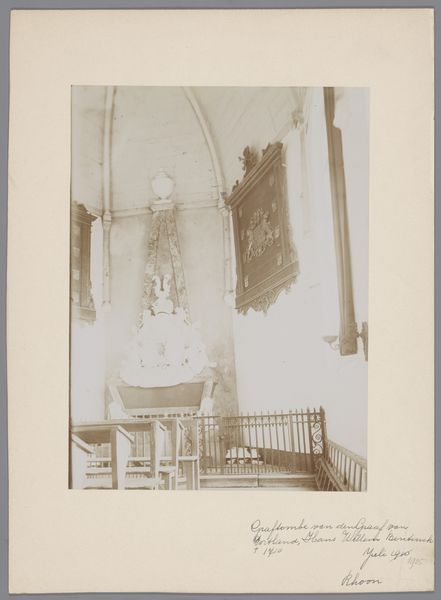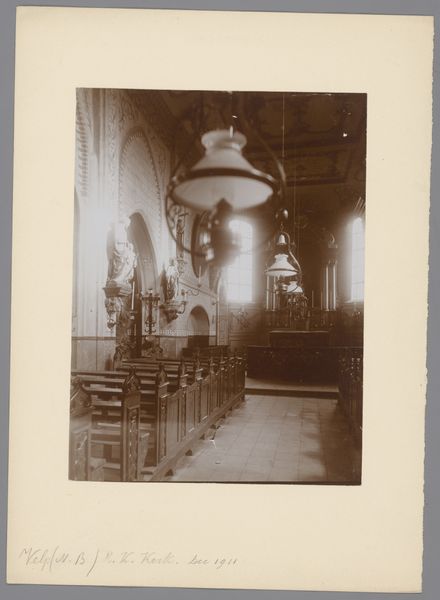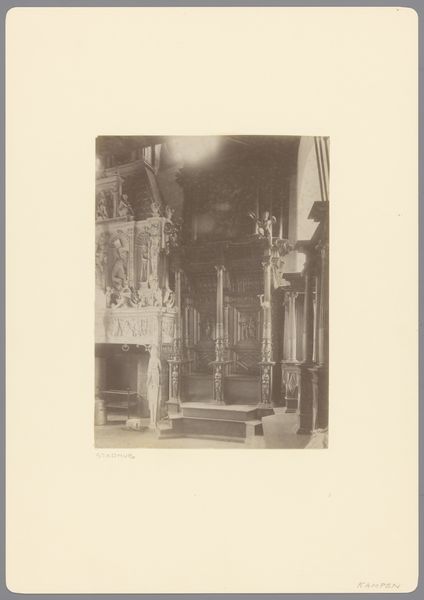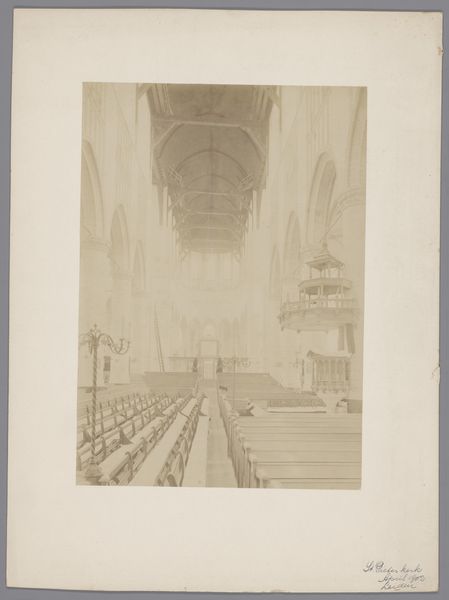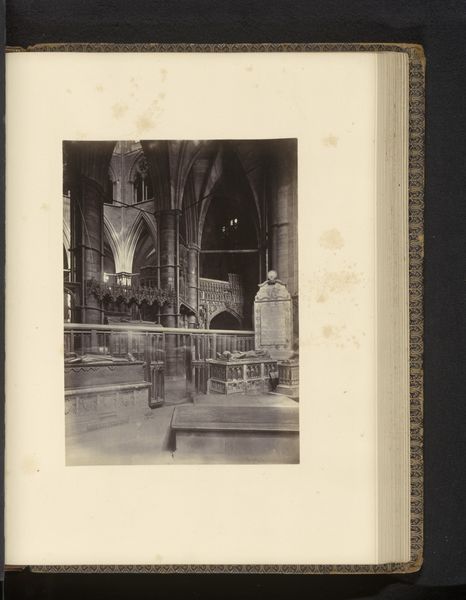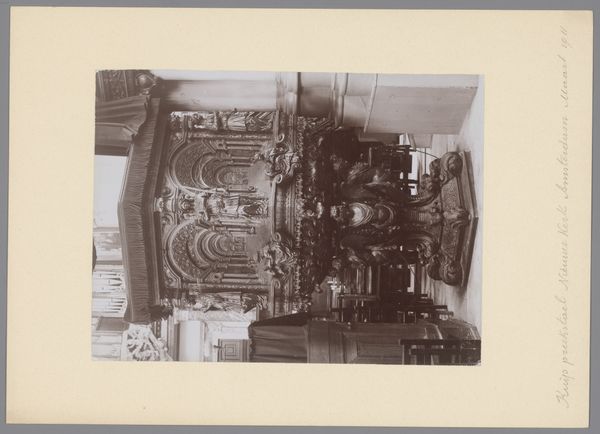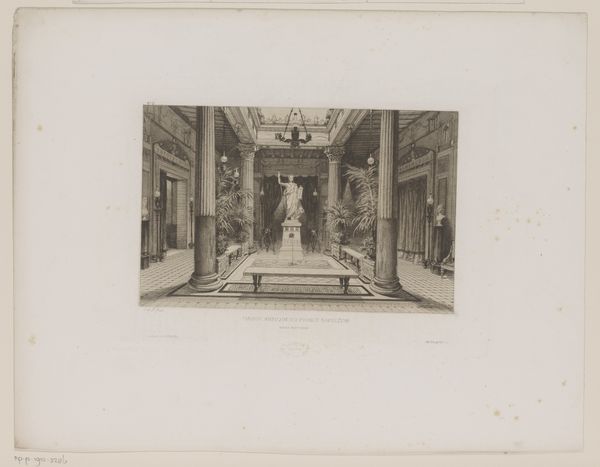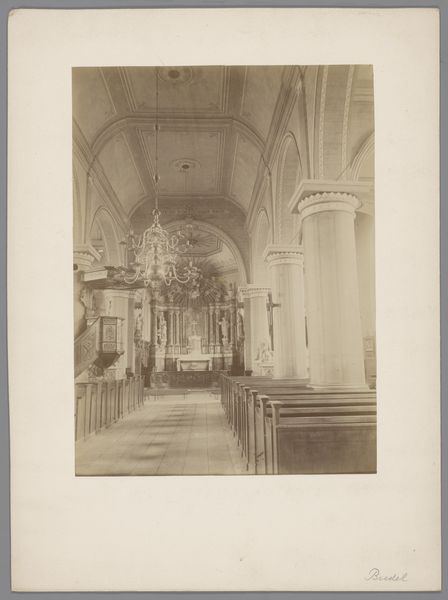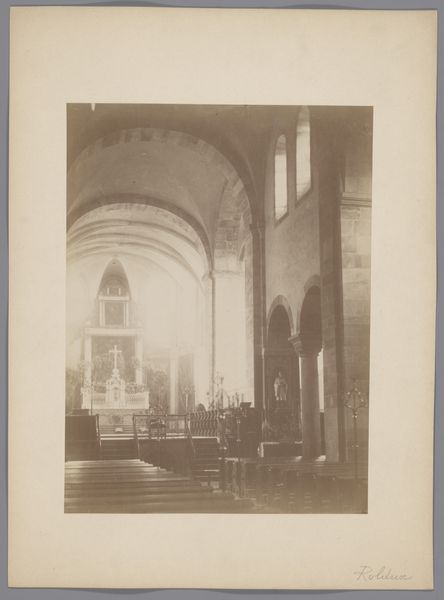
Interieur van de Grote of Onze-Lieve-Vrouwenkerk te Dordrecht 1880 - 1910
0:00
0:00
Dimensions: height 231 mm, width 170 mm
Copyright: Rijks Museum: Open Domain
Editor: Here we have an anonymous photograph entitled "Interior of the Grote or Onze-Lieve-Vrouwenkerk in Dordrecht," taken sometime between 1880 and 1910. The sepia tone lends a solemn air, emphasizing the rigid, empty pews. What historical dialogues are evoked for you when you consider this image? Curator: The emptiness strikes me too. Think about what this space represented then and now, who it includes, and maybe more importantly, who it excludes. This image dates from a time of significant social change and religious questioning. How do you think anxieties of class, belief, or gender might find representation – even in absence – in the picture’s composition and subject? Editor: That's fascinating! I hadn't considered the photograph as a record of absence, rather than presence. It almost feels like a stage, waiting for its players. So, you're saying we should look at what isn't there, to understand what *is*? Curator: Exactly! And perhaps consider whose narrative is prioritized in preserving this space, this visual record. Are the voices of marginalized communities amplified or silenced? Do we see the potential impact that race and colonization have on such spaces and photographic documentation? Ask yourself, how can this image become a tool for interrogating power dynamics of the past, or those ongoing now? Editor: That gives me a lot to think about. Seeing the photo this way is much more active, much more engaged with the world outside the frame. Curator: Indeed. It is vital to think about how history and culture intertwine and how these visual texts act as social agents. It isn’t only about the past; it's about understanding the legacies inherited today.
Comments
No comments
Be the first to comment and join the conversation on the ultimate creative platform.
